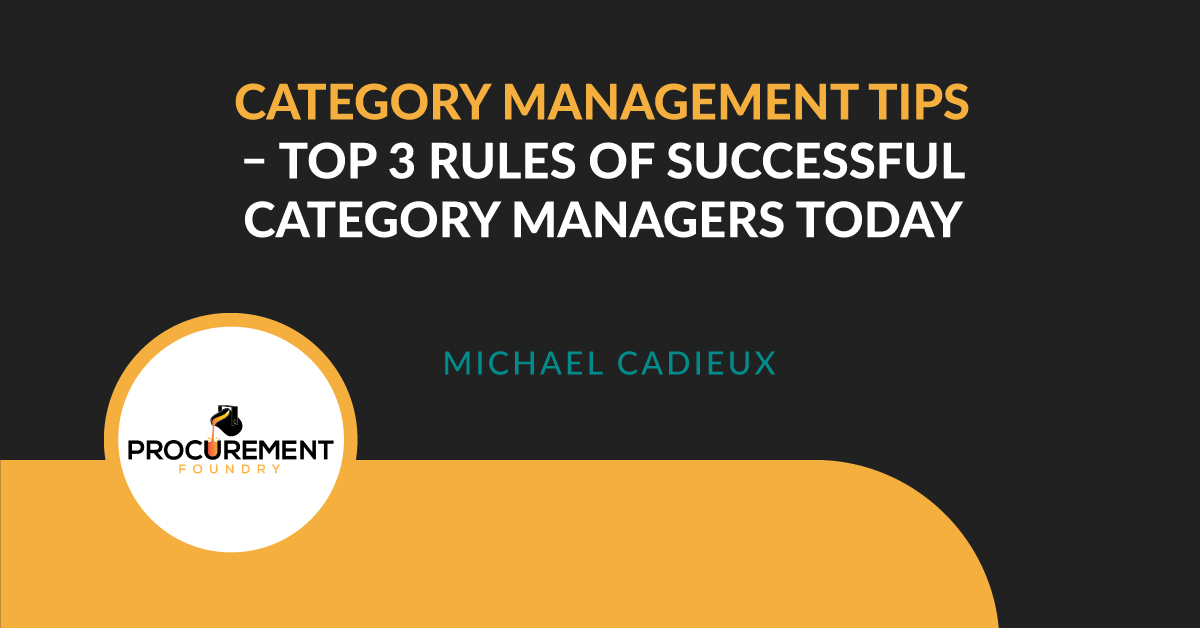Maximizing Savings Opportunities and Procurement's Strategic Value for CPOs
Saving money is not always about pinching pennies: advanced and data-driven insights enable you to identify real cost-saving opportunities, negotiate...
2 min read
![]() Michael Cadieux
:
7/18/22 5:00 AM
Michael Cadieux
:
7/18/22 5:00 AM

If you are a category manager—or are aspiring to be an excellent one in the future—you likely already know how critical it is to stay on top of your game. How do you do this? We provide you with a quick outline of three of the most crucial category management tips today.
Before we dive into our top three category management tips, let’s define what category management is and how it came about.
Category management first hit the scene in the 1980s when companies began grouping products into categories based on the function/role they played (translation: how buyers were using them). Marketing teams fittingly began dubbing the process “category management.”
Category management proved immensely helpful on many levels, including letting retailers streamline their operations, thus allowing them to avoid unnecessary (and costly) competition amongst their own product lines. This, in turn, boosted sales.
Fast forward to 2022, and category management today has evolved in many ways, with the term now mainly being synonymous with the process companies use to improve supply chains. However, its foundation and central focus has always remained to provide maximum value by grouping products.
Since category managers create a strategy that impacts everyone, they need to un-silo information and see the process from start to finish. Doing this successfully requires market research, knowing price points, vendor consolidation, figuring out acceptable payment terms, conducting risk assessments, and determining whether suppliers can deliver OTIF.
Category managers have to wear a lot of hats, including honorary fireman helmets, as they are forever putting out fires and solving procurement problems. And that’s not all (we are still only on tip #1!)
Now, here is where we can’t stress the importance of good data—and knowing how to use it. For instance, you need to know your data when trying to figure out countless things, such as knowing what your tail spend items are and conducting your risk assessment based on the most accurate data.
Far too few companies are utilizing their data properly—if at all. A recent Deloitte CPO survey reported that “very few CPOs (18%) were formally tracking the risks that existed in their direct (tier 1) supplier base, and only 15% had visibility beyond that.”
For category managers and procurement leaders, this is missing a huge opportunity, not to mention failing in their most important role, defined by Deloitte as understanding and building “risk, resilience, and agility metrics across their organizations.” The right data and metrics can have an immeasurable impact on a company’s bottom line, as it allows for accurate prediction and greater autonomy in processes, and much more.
Cross-functional collaboration is crucial for high-performing category managers. When you can ensure that each team member, leader, and stakeholder has what they need things will fall into place. Teams are much more likely to use process if they feel understood and have some level of self-service procurement. Understanding other departments keeps things moving along smoothly, efficiently, and without incredible headaches to you (that last one is the real gem).
Want to learn more? Join the Foundry today.

Saving money is not always about pinching pennies: advanced and data-driven insights enable you to identify real cost-saving opportunities, negotiate...

The topic of our recent roundtable discussion with a dozen Procurement Foundry community members—exploring potential flaws in procurement incentive...

Every 30 days or so, I get the same alert on my phone—“Your electricity bill is available for viewing.” I take a quick look, make sure nothing seems...